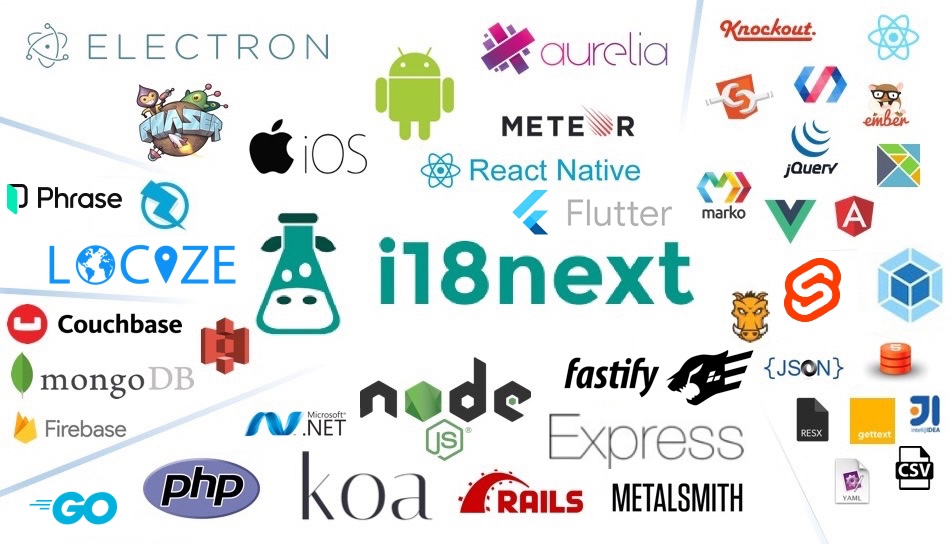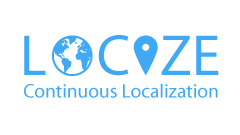Core Functionality
- i18next:
i18next is a full-featured internationalization framework that supports translation management, pluralization, context-based translations, and interpolation. It can work with various backends for loading translations and is highly customizable, allowing developers to tailor it to their specific needs.
- react-i18next:
react-i18next extends i18next specifically for React applications, offering hooks like useTranslation for easy access to translation functions within components. It also provides higher-order components and context for managing translations, making it straightforward to integrate into React's component-based architecture.
- react-intl:
react-intl focuses on providing a set of components and APIs for formatting dates, numbers, and strings according to the user's locale. It emphasizes the importance of not just translating text but also formatting it correctly, which is crucial for a localized user experience.
- react-native-localize:
react-native-localize provides utilities for detecting the user's locale and preferred languages directly from the device settings. It allows developers to adapt their applications based on the user's environment, ensuring that the app behaves correctly in different regions.
Integration
- i18next:
i18next can be integrated into any JavaScript project, including frameworks like Angular, Vue, and Node.js. Its flexibility allows developers to choose how they want to manage translations, whether through JSON files, databases, or APIs.
- react-i18next:
react-i18next is designed specifically for React, making it easy to integrate with React's component lifecycle. It provides a straightforward API that fits well within the React ecosystem, allowing for efficient translation management without boilerplate code.
- react-intl:
react-intl integrates well with React applications and focuses on providing components for formatting. It is particularly useful for applications that need to manage complex formatting scenarios, such as currency or date formats, in addition to translations.
- react-native-localize:
react-native-localize is tailored for React Native apps, making it easy to access device-specific localization settings. It integrates seamlessly with other libraries, allowing developers to create a cohesive localization strategy across web and mobile platforms.
Community and Ecosystem
- i18next:
i18next has a large and active community, with extensive documentation and plugins available for various frameworks and tools. This makes it easier to find support and resources when implementing internationalization in projects.
- react-i18next:
react-i18next benefits from the popularity of both React and i18next, resulting in a strong community and a wealth of resources. The library is frequently updated to keep up with React's evolving ecosystem, ensuring compatibility with the latest features.
- react-intl:
react-intl is part of the FormatJS project, which has a robust community focused on internationalization in JavaScript. It provides comprehensive documentation and examples, making it easier for developers to implement localization features effectively.
- react-native-localize:
react-native-localize is widely used in the React Native community, with active maintenance and support. Its focus on mobile localization ensures that developers have access to the latest best practices for handling localization on mobile devices.
Performance
- i18next:
i18next is designed to be efficient, with features like lazy loading of translations and caching mechanisms that improve performance. However, developers need to be mindful of how they structure their translation files to avoid performance bottlenecks in large applications.
- react-i18next:
react-i18next optimizes performance by using React's rendering lifecycle. It minimizes unnecessary re-renders by only updating components that require translation updates, ensuring a smooth user experience even in large applications.
- react-intl:
react-intl focuses on performance by leveraging the built-in ECMAScript Internationalization API, which is optimized for formatting operations. This can lead to better performance in applications that require extensive localization features.
- react-native-localize:
react-native-localize is lightweight and designed to minimize overhead, ensuring that localization checks do not significantly impact the performance of mobile applications. It efficiently retrieves localization data from the device.
Learning Curve
- i18next:
i18next has a moderate learning curve due to its extensive feature set and flexibility. Developers may need to invest time to fully understand its capabilities and best practices for managing translations effectively.
- react-i18next:
react-i18next is relatively easy to learn for developers familiar with React, as it builds on the concepts of React components and hooks. The integration is straightforward, making it accessible for those new to internationalization.
- react-intl:
react-intl may require some time to grasp its formatting capabilities, especially for developers who are not familiar with the ECMAScript Internationalization API. However, its clear documentation helps ease the learning process.
- react-native-localize:
react-native-localize has a low learning curve, especially for React Native developers. Its API is intuitive, allowing developers to quickly implement localization features without extensive prior knowledge.




















